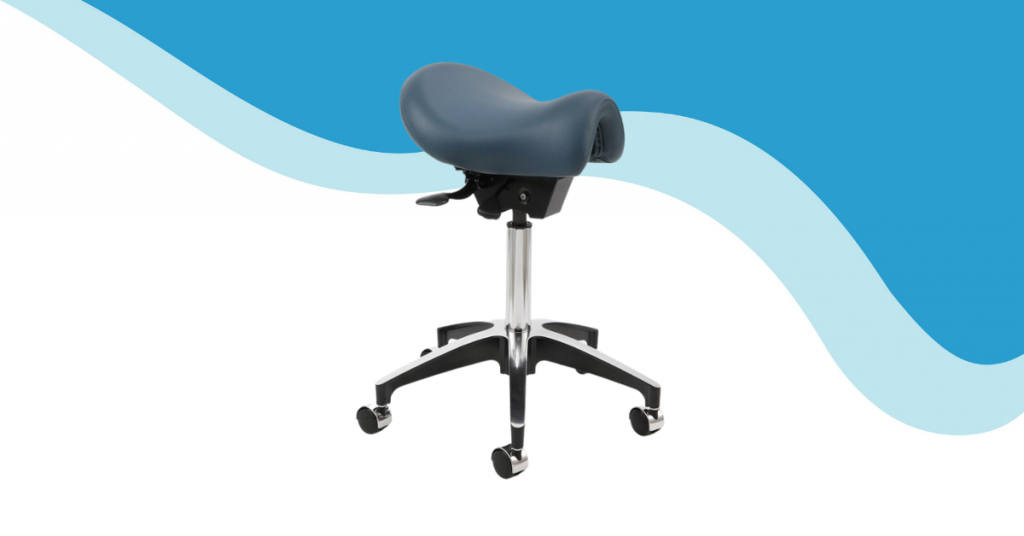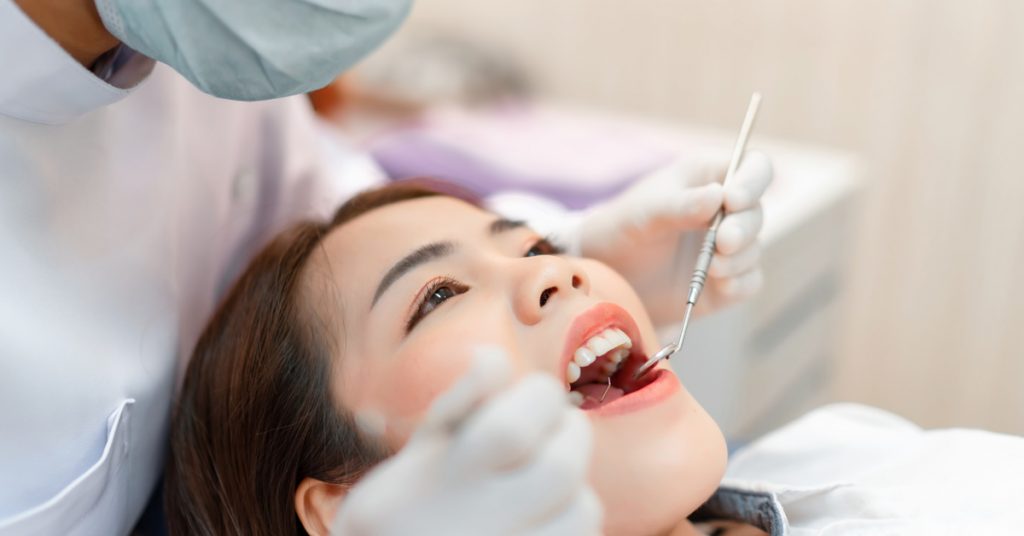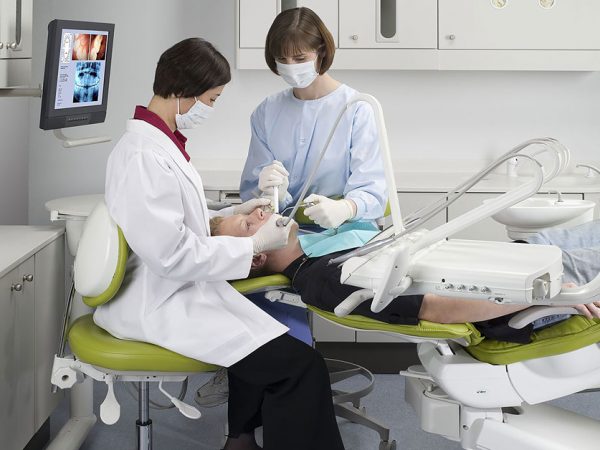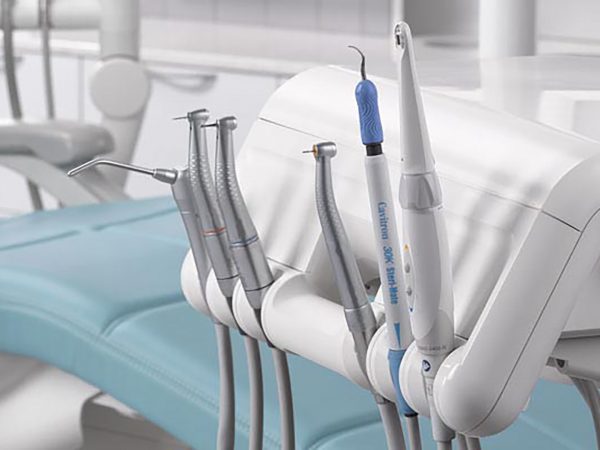Since appearing about 70 years ago, ergonomics has become one of the most important criteria of an effective workplace. In the modern business environment, there is more of a push to ensure ergonomic requirements are met and an employee’s physical wellbeing is considered. In the dental industry, ergonomics are just as important.
Stools are one of the most used items in a surgery, and they’ve evolved significantly from the early 1970s where they were more closely related to a cushion on a pole. This one-size-fits all style pales compared to the new economically designed variety of dental stools we utilise today. So while a stool may not be as comfy as, let’s say, a couch – we’re miles ahead of what dentist of old had to deal with.
Considering The Spine
Economics has developed around improving work conditions. The main pain point (literally) that historically hindered office workers or people who sit for long periods was the back, or more specifically, the spine.
A lot of what we do with our rear has a significant impact on the rest of our posture. The spine is more than a singular bone – it’s a chain of flexible links, and because of that, it can shift over time. A healthy spine contains four distinct curves. These curves provide support to the head and arms and stabilise our torso. The best way to maintain this structure is by sitting upright with good posture.
However, unlike standard office work, it’s virtually impossible to provide clinical dental care while standing or sitting in a fully upright position. That’s why ergonomics are so important in dentistry, because at the baseline – the standard practices don’t work. Dental seating must be engineered in an ergonomic way that does not hinder or block access to the patient.
Saddle Stool Studies
A study in 2007 that compared a Western-style saddle to a standard office chair showed that saddle seating reduced lower-back discomfort more effectively, and provided a more optimal seating position because of the thigh-to-trunk angle.
Another study in 2013 conducted by Annetts and colleagues measured a person’s pelvic tilt, lumbar angle, neck angle, and head tilt on four seating options. The saddle chair test proved the best lumbar, cervical and general posture support.
Current Uses Of Saddle Stools
Most saddle users are women; however, the stool design is not gender-specific. Men are steadily seeing the benefits of this seating option and switching to a saddle stool for better economic support.
Saddle stools designed specifically for the dental industry are durably made to provide comfortable and ergonomic seating for years without significantly morphing or deteriorating. They are made from robust materials that can withstand the rigorous conditions of the healthcare environment.
Medical-grade upholstery materials are durable and super easy to sanitise. And don’t worry about slipping off – most medical upholstery is lightly textured to improve grip. This makes sure the user can rest comfortably for long periods without sliding around.
Picking Your Saddle Stool Specifications
Five-caster stool bases are the most sturdy option, offering a wide net of support. For the best results, opt for casters that correspond to the surface the saddle stool will be on: hard floors or carpet.
Cylinder height should be adjusted based on leg length and not body height. This is because people’s height can be from other areas (e.g. torso, head, etc.) that don’t necessarily affect their seating comfort. Most saddle stools are easily adjustable for all leg lengths. Moreso, for people with shorter or longer leg lengths, the saddle can be tilted in different directions to increase or decrease the distance to the floor.
Picking The Perfect Patient Position On A Saddle Stool
If you’re used to standard dental stools, it may seem like a change of pace to switch to a saddle. Don’t fret, you’ll be recognising the improvements in no time!
Position the patient’s head, so the mouth is easy to reach (without overextending your arm). For a seated clinician, a general rule is to have the patient’s mouth at waist level so your forearm is parallel to the floor.
This optimal arm placement eliminates shoulder abduction, also known as ‘chicken wing’ posture. Your saddle stool will let you adjust according to each patient, so they’re always at the optimal position no matter their measurements.
Clinicians who have already made the switch report reduced back pain and less overall fatigue. A properly fitted saddle alleviates the stresses of sitting and standing and is the perfect middle ground. Where a normal stool positions your thighs parallel to the floor, a saddle has them tilted downwards. This engages your stomach and lower back, strengthening them while you sit. It also reduces impact damage on the hips, knees and ankles that comes with excessive standing. The saddle allows a person to assume a neutral position, keeping the spine straight, while also taking pressure off their legs.
Setting Up Your Stool
Saddle stools are an important tool designed to help create a neutral body posture for the user. They are simple to use and bring many long-lasting benefits. Follow these steps to help the transition from standard stools to saddle stools.
• Sit behind the front edge of the saddle.
• Balance your weight evenly across the saddle width.
• Straddle the seat and create a tripod with your knees and the stem of the stool, feet flat on the ground. The wider the saddle, the wider the tripod.
• Pick up both feet simultaneously to determine if the seat pan tilt angle is correct. If your spine is in neutral, your torso will feel perfectly balanced on the seat. If not, readjust the tilt.
• Sit with your torso facing the dental patient chair.
• Before working on a patient, adjust the stool height first and fine-tune the dental patient chair second.
• Since saddle stools position a clinician higher and closer to the patient, your current magnification system may need a minor adjustment to the new working distance.
If you want to make the switch to Saddle Stools and improve the ergonomic conditions of your practice, contact Dental Depot today. We stock leading dental equipment at a great price. Check out our saddle stool stock here today!





